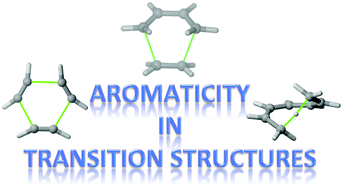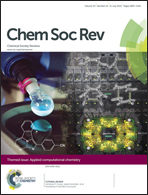Aromaticity in transition structures
Abstract
Aromaticity is an essential concept in chemistry, employed to account for the unusual stability, reactivity, molecular structures, and other properties of many unsaturated organic compounds. This concept was later extended to inorganic molecules and to saturated systems with mobile electrons, as well as to transition structures, the focus of the present review. Although transition structures are inherently delocalized, not all exhibit aromaticity. We contrast here examples of pericyclic reaction transition structures (where aromaticity is significant) with those for illustrative pseudo-pericyclic reactions (where aromaticity is less or not important). Non-pericyclic reactions may also have aromatic transition structures. State-of-the-art computational methods to evaluate the aromaticity of transition structures are described briefly.

- This article is part of the themed collection: Applied Computational Chemistry

 Please wait while we load your content...
Please wait while we load your content...